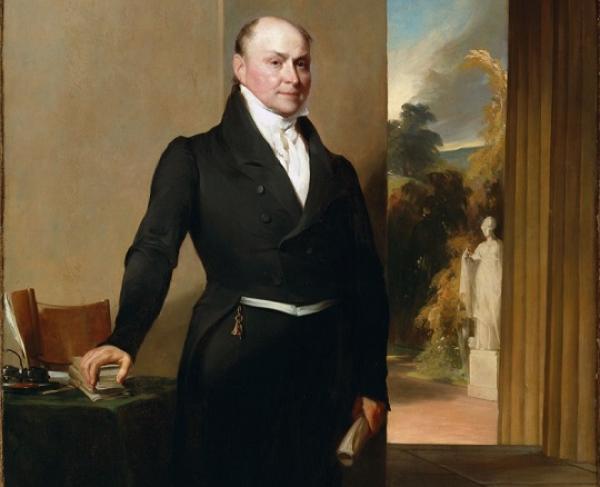John Quincy Adams served as the sixth President of the United States (1825–1829). He also made significant contributions to American political history through his long diplomatic career, his tenure as Secretary of State, and his service in the House of Representatives. His presidency coincided with a period of increasing political polarization and the early development of the modern party system.
Early Life and Education
John Quincy Adams was born on July 11, 1767, in Braintree, Massachusetts (present-day Quincy). His father, John Adams, was one of the leaders of the American Revolution and later served as the second President of the United States.
During his childhood, Adams spent considerable time in Europe with his family and received education in cities such as Paris, Amsterdam, and St. Petersburg. At the age of fourteen, he served as secretary to Francis Dana, the U.S. envoy to Russia. He returned to the United States in 1785, graduated from Harvard University in 1787, and after studying law, was admitted to the bar in 1790.
Diplomatic and Early Political Career
In 1794, he was appointed by George Washington as U.S. minister to the Netherlands, and in 1797, his father, President John Adams, appointed him to Prussia. In 1803, he was elected as a senator from Massachusetts. During his time in the Senate, he supported the Louisiana Purchase, a position that severed his ties with the Federalist Party. In 1808, he resigned and joined the Democratic-Republican Party.
In 1809, President James Madison appointed him U.S. minister to Russia, where he worked to strengthen commercial relations. In 1814, he participated in negotiations for the Treaty of Ghent, which ended the War of 1812, and from 1815 to 1817, he served as U.S. ambassador to the United Kingdom.
Secretary of State and the Monroe Doctrine
In 1817, under President James Monroe, Adams was appointed Secretary of State, a position he held until 1825. During this period, he negotiated the Adams-Onís Treaty, through which Florida was acquired from Spain. He also played a central role in reaching agreements with Britain on the joint occupation of the Oregon Territory and the delineation of the U.S.–Canada border. Adams was instrumental in drafting the Monroe Doctrine and persuaded Monroe to issue it unilaterally and independently.

John Quincy Adams (The American Battlefield Trust)
Presidency (1825–1829)
The 1824 presidential election resulted in no candidate receiving a majority of electoral votes, sending the decision to the House of Representatives. With the support of Henry Clay, Adams was elected president, and he subsequently appointed Clay as Secretary of State. This appointment sparked allegations of a “corrupt bargain” and drew criticism throughout Adams's presidency.
As president, Adams proposed ambitious programs to improve national infrastructure, including roads, canals, a national university, and an astronomical observatory. However, lacking strong support in Congress, many of these initiatives failed. In the 1828 election, he was defeated by Andrew Jackson following an aggressive political campaign.
House of Representatives and Anti-Slavery Efforts
In 1830, Adams was elected to the House of Representatives from Massachusetts, where he served for 17 years. He became a leading figure in the fight against slavery, notably helping to overturn the “gag rule,” which had barred congressional discussion of anti-slavery petitions. In 1841, he successfully argued before the Supreme Court in the Amistad case, securing the release of Africans who had been illegally enslaved. During this period, he became known as “Old Man Eloquent” for his powerful oratory.
On February 21, 1848, Adams suffered a stroke while speaking on the floor of the House. He died two days later, on February 23, and was buried in the family tomb in Quincy, Massachusetts.



